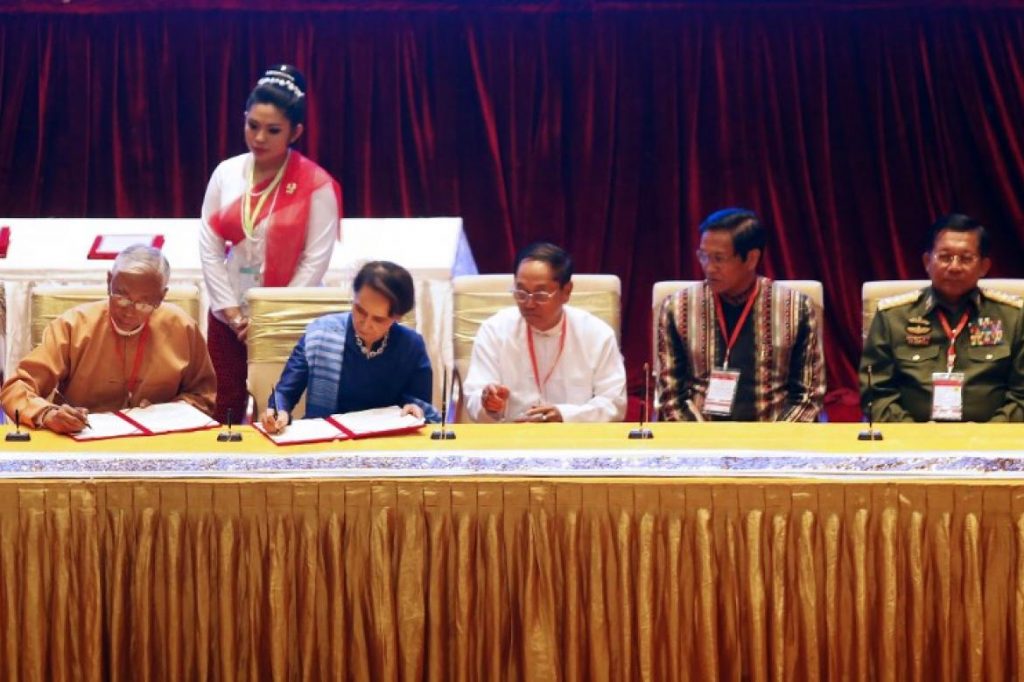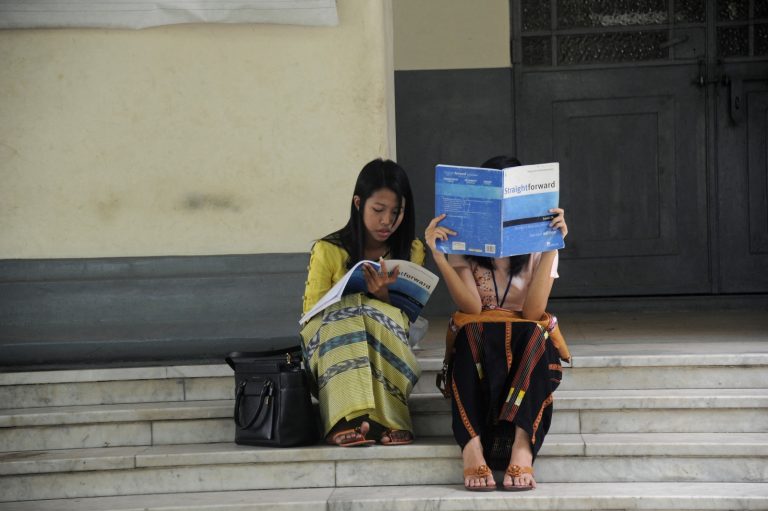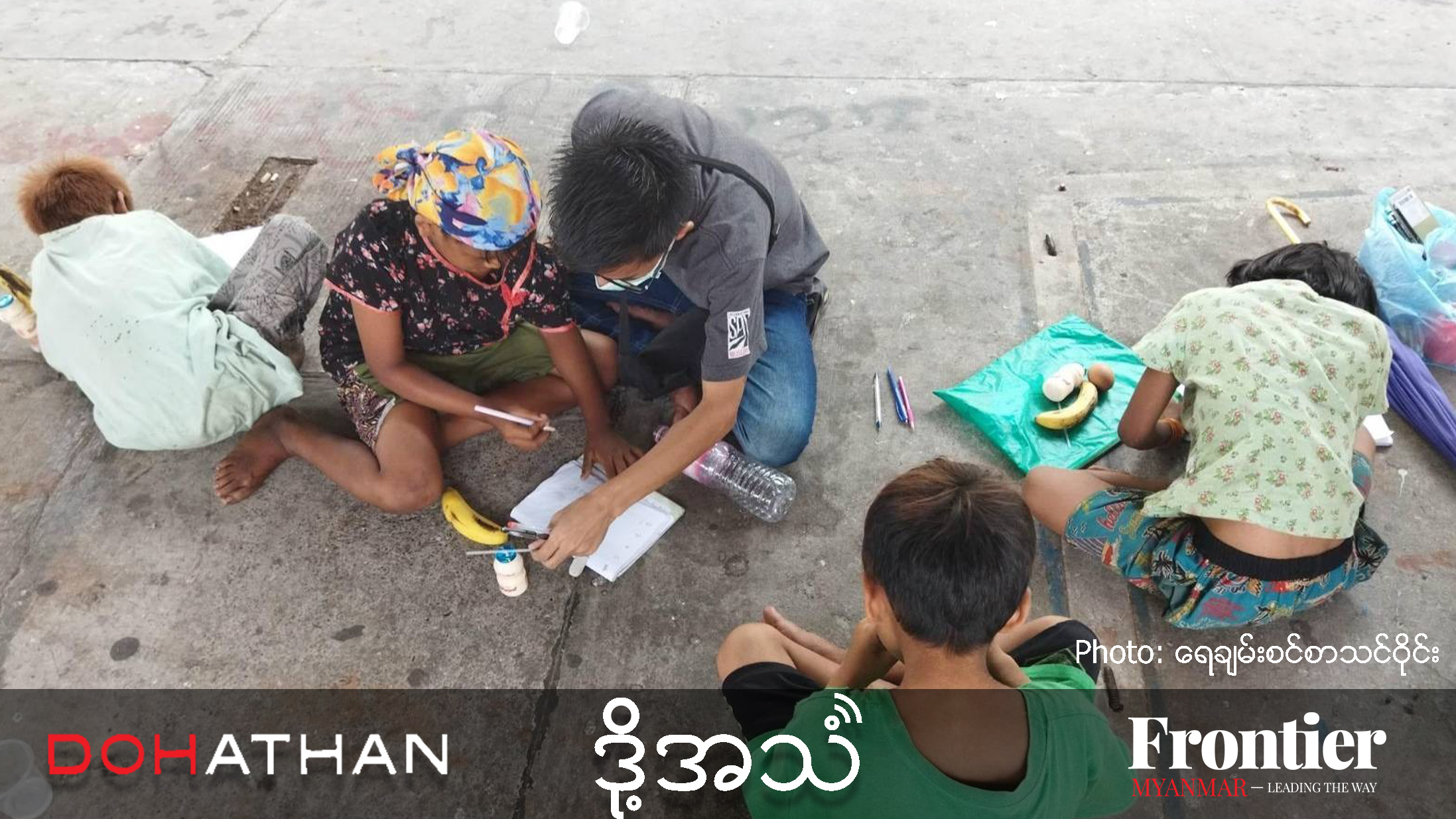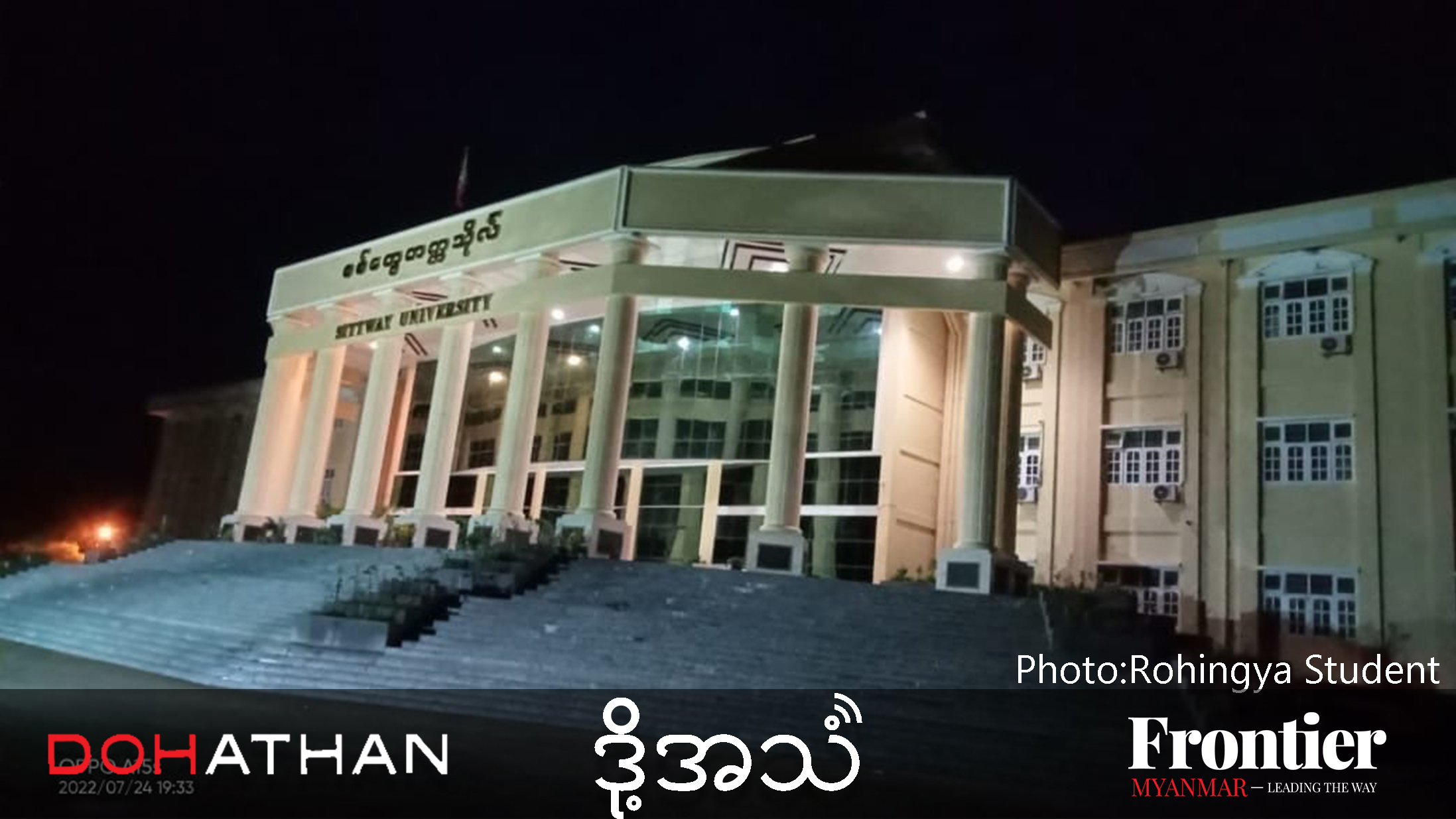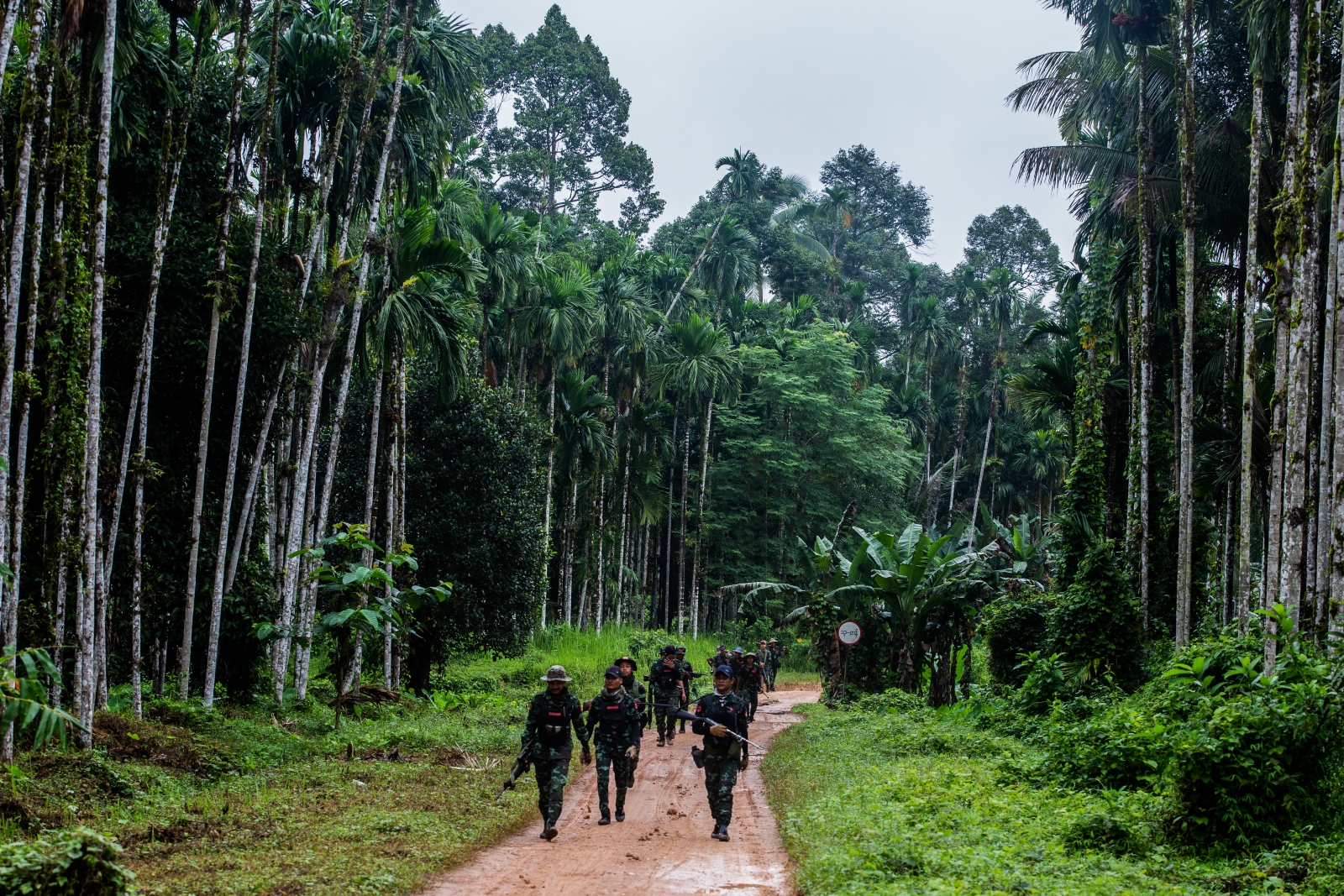Mother-tongue teaching is a feature of the Mon National School system but parents say their children would benefit from more institutions beyond primary level.
By WONSA MON | FRONTIER
IN THE FAR south of Mon State, on the upper reaches of the Ye River about 24 kilometres (15 miles) from the estuary town of the same name, is the village of Wezin.
Wezin is in territory controlled by the 2nd Battalion of the Mon National Liberation Army, the armed wing of the New Mon State Party, and was originally inhabited by the fighters’ families, when it was known as Mainmaline, which means “a place for wives”.
The number of families at the outpost grew and in 2002 the site was renamed Wezin, which has about 60 households.
The hills beyond Ye are one of the main strongholds of the NMSP, which was founded in July 1958 to fight for Mon autonomy. In 1995 it agreed a ceasefire with the junta and was permitted by the Tatmadaw to open liaison offices throughout the state.
Support more independent journalism like this. Sign up to be a Frontier member.
They were closed in April 2010 after the NMSP resisted Tatmadaw pressure to become a Border Guard Force. The NMSP signed a truce with the Union Solidarity and Development Party government on February 1, 2012. It was not among the eight groups that signed the Nationwide Ceasefire Agreement in October 2015, but after prolonged negotiations inked the accord earlier this year.
The end of armed conflict in the area meant that non-government groups stopped providing food aid and medical care in 2012, a move that initially caused hardship for women and children, said Wezin village administrator Nai Chit Thaung.
Support from the NMSP had led to improved healthcare but children suffer from limited access to education, he told Frontier.
The Mon National School in the village, at which the children are taught in their mother tongue, can only provide education to grade six, Chit Thaung said.
“Some students are clever and want to continue their education beyond grade six but their parents cannot afford further schooling, so some children find jobs on farms or plantations. Others have to cross into Thailand to work there,” he said.
The Mon National School system was founded in 1972 and there are 136 throughout the state, with more than 800 teachers, said the Mon National Education Committee. There are 10 Mon National Schools in the Ye Chaung Phya region, including Wezin. But of these, only one is a high school.
For students in Wezin, the options for further education for those whose families can afford it are the high schools in Nyi Sar Mon and Andin villages in Ye Township, which are 20 miles and 30 miles from Wezin, respectively.
The village school has 60 pupils and five teachers. The teachers are paid K70,000 a month, of which the NMSP provides K30,000 and the balance is covered by the village, drawn from a fund to which each household contributes at least K200 a month.
Since the NMSP signed the Nationwide Ceasefire Agreement in 2018, villagers have been hoping that the local school would be upgraded to a Mon National Middle School if it was not possible to have a high school.
Aung Zay, a member of the Mon National Education Committee, said the village was too small to qualify even for a middle school.
“The only practical solution for students who want to continue their education is to enroll at a school but then instead of actually attending the school they can hire teachers from other places to come to the village to teach,” he said.
Aung Zay said the Mon wanted to liberalise the nation’s centralised education system by providing a model for a future federal education system, under which regions of the country would have a significant degree of autonomy.
“The Mon education system leads to a federal education system. We are just trying to supervise our own education system,” he said.
The Mon National Education Committee, which is under the NMSP and administers the Mon National School system, has set a policy requiring that students be taught in their mother-tongue and also learn Myanmar and a foreign language, Aung Zay said.
As well as increasing the number of youth educated in Mon, it was also planned to provide vocational training opportunities for students who failed their matriculation exam, a prerequisite for admission to university.
Chit Thaung, the village administrator, said healthcare and transport had improved noticeably in the 16 years since Wezin was established, thanks to donations of solar panels, road and water infrastructure, a hospital and supplies to residents.
But poverty was affecting educational opportunities for its children, he added.
“Some well-to-do parents send their children to high school but most children became drop-outs after primary level,” Chit Thaung said. “I want our village school to be upgraded from post-primary to high-school level, but the village cannot afford to support the teachers.”


